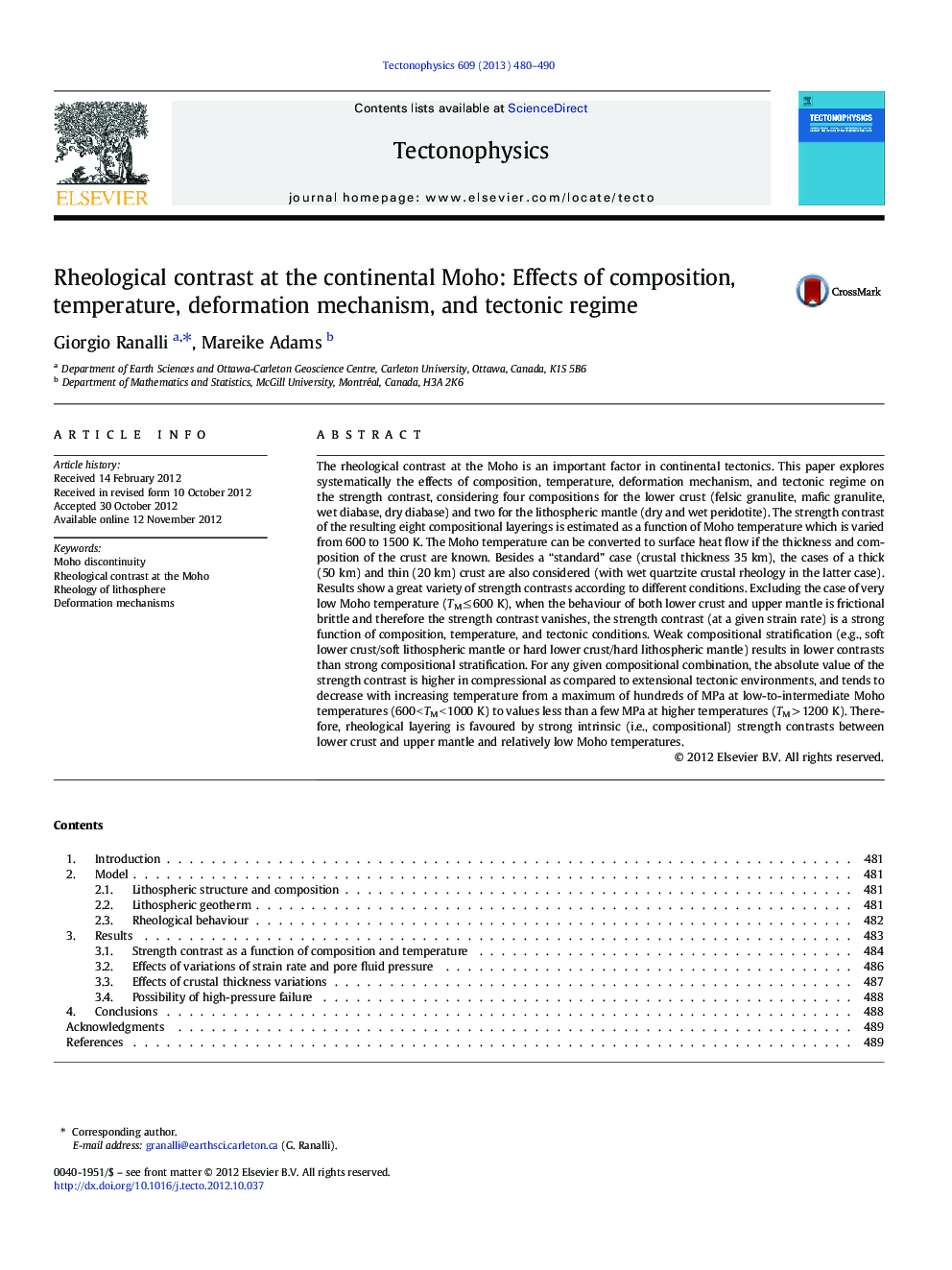| کد مقاله | کد نشریه | سال انتشار | مقاله انگلیسی | نسخه تمام متن |
|---|---|---|---|---|
| 6434094 | 1636778 | 2013 | 11 صفحه PDF | دانلود رایگان |
The rheological contrast at the Moho is an important factor in continental tectonics. This paper explores systematically the effects of composition, temperature, deformation mechanism, and tectonic regime on the strength contrast, considering four compositions for the lower crust (felsic granulite, mafic granulite, wet diabase, dry diabase) and two for the lithospheric mantle (dry and wet peridotite). The strength contrast of the resulting eight compositional layerings is estimated as a function of Moho temperature which is varied from 600 to 1500 K. The Moho temperature can be converted to surface heat flow if the thickness and composition of the crust are known. Besides a “standard” case (crustal thickness 35 km), the cases of a thick (50 km) and thin (20 km) crust are also considered (with wet quartzite crustal rheology in the latter case).Results show a great variety of strength contrasts according to different conditions. Excluding the case of very low Moho temperature (TM â¤Â 600 K), when the behaviour of both lower crust and upper mantle is frictional brittle and therefore the strength contrast vanishes, the strength contrast (at a given strain rate) is a strong function of composition, temperature, and tectonic conditions. Weak compositional stratification (e.g., soft lower crust/soft lithospheric mantle or hard lower crust/hard lithospheric mantle) results in lower contrasts than strong compositional stratification. For any given compositional combination, the absolute value of the strength contrast is higher in compressional as compared to extensional tectonic environments, and tends to decrease with increasing temperature from a maximum of hundreds of MPa at low-to-intermediate Moho temperatures (600 < TM < 1000 K) to values less than a few MPa at higher temperatures (TM > 1200 K). Therefore, rheological layering is favoured by strong intrinsic (i.e., compositional) strength contrasts between lower crust and upper mantle and relatively low Moho temperatures.
Journal: Tectonophysics - Volume 609, 8 December 2013, Pages 480-490
